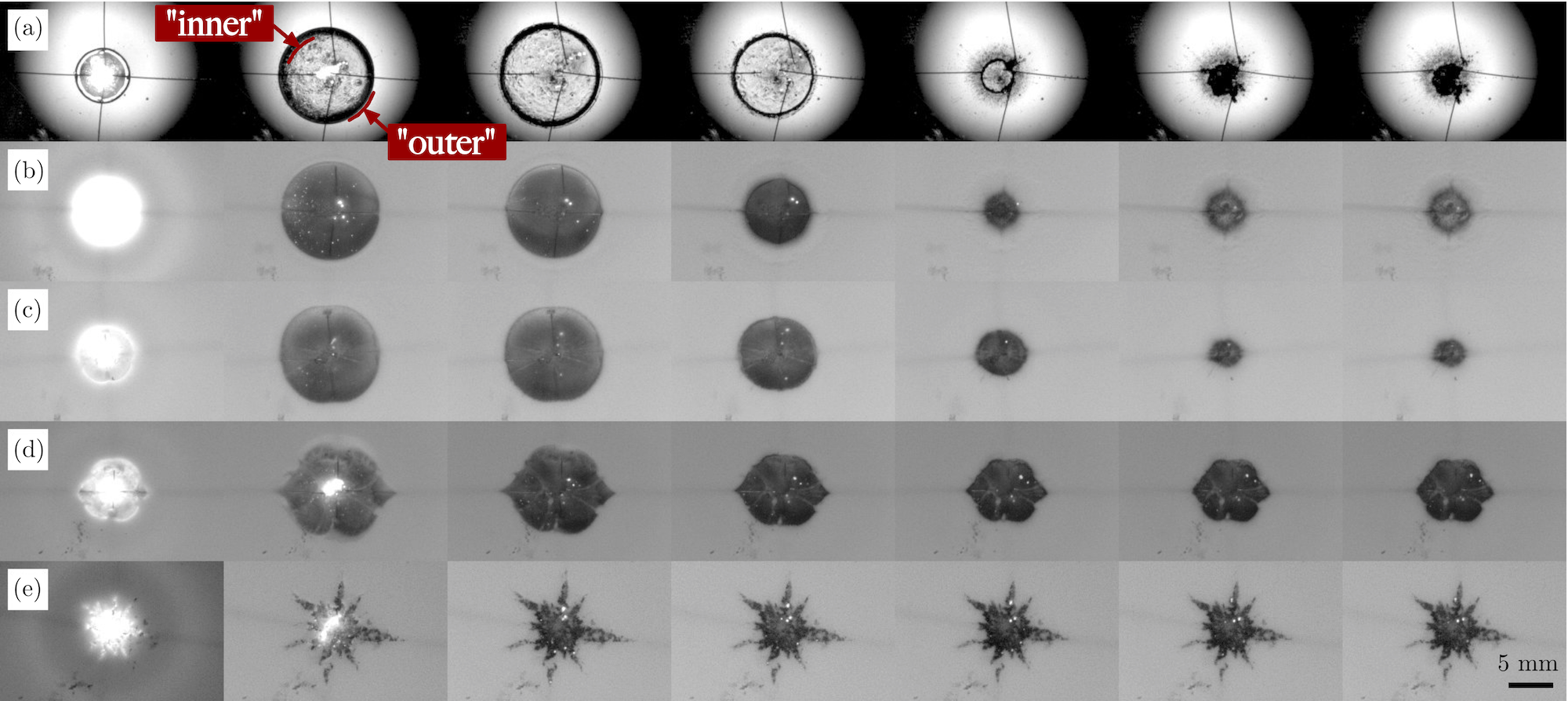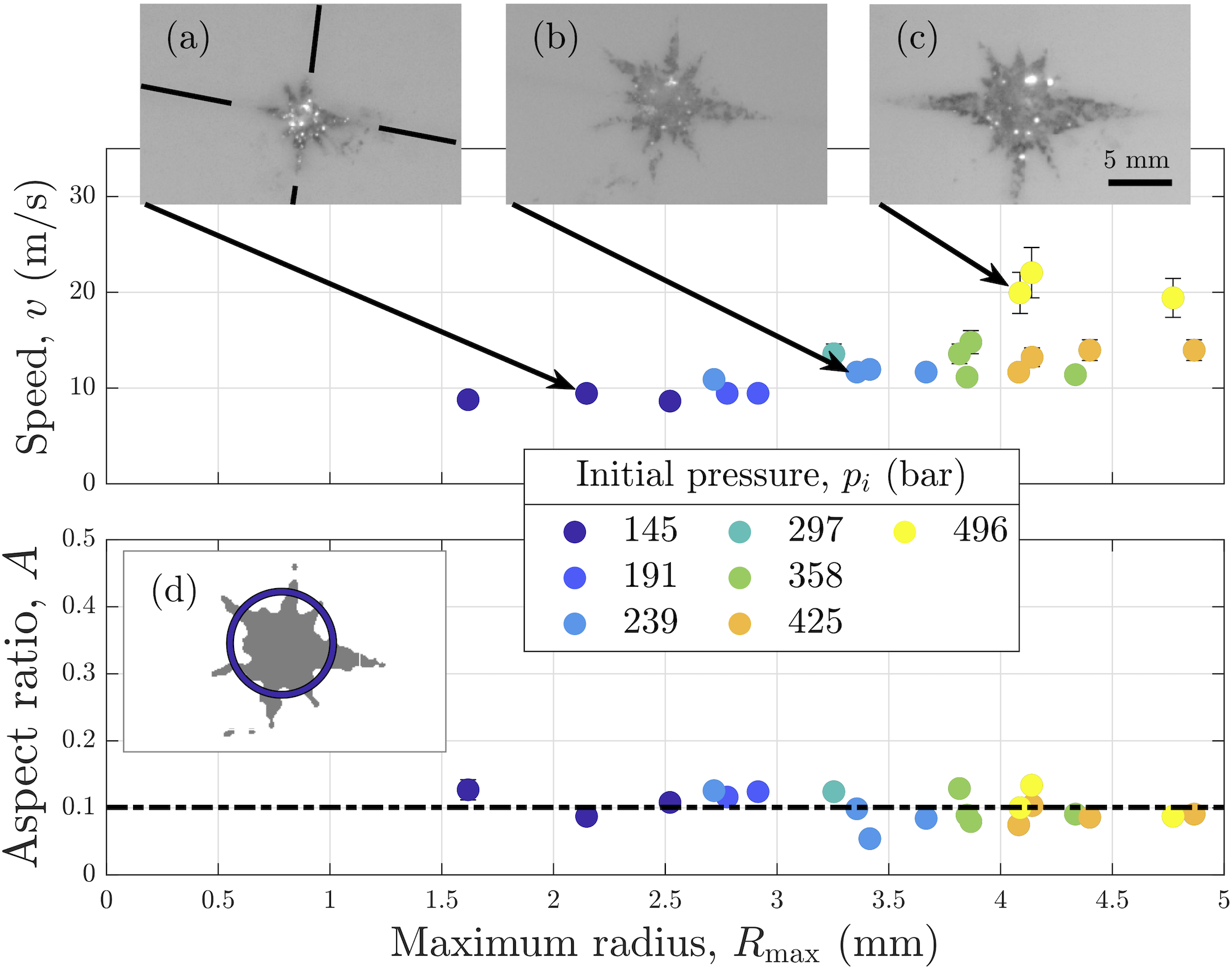Cavitation in Different Liquids
Cylindrical cavitation between two flat plates is studied for the first time in a shear-thickening particle suspension. Bubble shapes and dynamics are recorded for various volume fractions of the liquid.

Cavitation has been extensively studied in Newtonian fluids and to a lesser yet significant degree in shear-thinning fluids. However, cavitation has not been previously investigated in shear-thickening fluids, of which a water-cornstarch suspension is perhaps the best-known example. An interesting property of such fluids is that, when subjected to an increase in strain rate, their viscosity increases until they exhibit solidlike behavior and can even fracture. As cavitation bubbles are capable of generating extreme strain rates, they could be affected by shear-thickening fluid behavior. As visual access is limited by opaque or non-index-matched particles present in such fluids, an experimental study of nominally cylindrical spark-induced cavitation bubbles is conducted in a 2 mm gap between two parallel flat and transparent plates, which allows visualization of the bubbles as they contact the boundary. They are theoretically studied through the cylindrical Keller-Miksis equation adapted to a shear-thickening fluid using a Cross model. For volume fractions starting from φ = 0.44, the limit between continuous and discontinuous shear-thickening regime, cavitation bubbles deform increasingly until they are replaced by cavitation-induced fracture between φ = 0.46 and φ = 0.52. Fracture propagation speeds were found to be in the same range as fracture speeds previously reported for pressure-driven cavity expansion, albeit for estimated initial pressures that are now orders of magnitude higher. More details can be found in our external page study.
